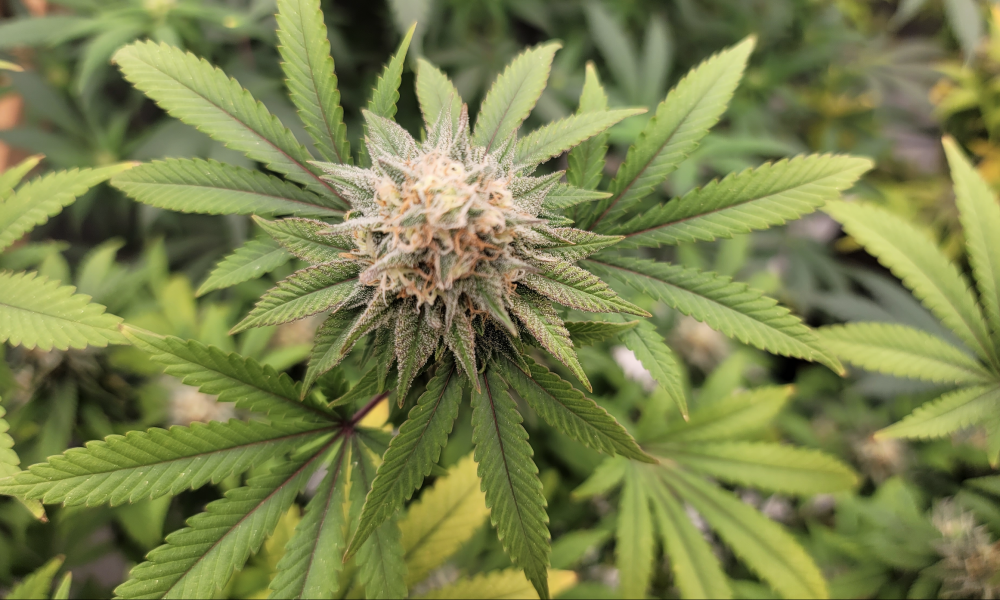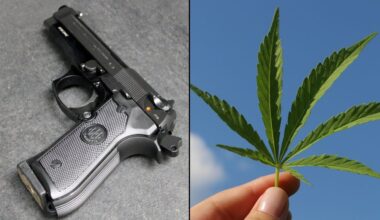If government officials want to effectively encourage people to avoid driving while impaired by marijuana, their public education campaigns should not mock or stereotype cannabis consumers. That’s according to a new report from a group backed by governor’s offices in all 50 states. Instead, anti-DUI messaging should come from sources that marijuana enthusiasts trust, like cannabis businesses themselves, it says.
The Governors Highway Safety Association (GHSA) released the report last month, finding mixed results about the impact of state-level cannabis reform on traffic incidents and fatalities. It pointed to some research indicating that adult-use legalization was associated with an increase in traffic incidents and other studies showing a decrease in such accidents post-medical cannabis legalization.
GHSA recognized that there are limitations in how officials determine causation, as there are currently no widely used to effectively detect active impairment from THC like breathalyzers do for alcohol. But in any case, the organization said that public perception of the risks of driving under the influence of cannabis has fallen, and that requires updated strategies for public education initiatives.
The report—which received funding from Responsibility.org and the National Alliance to Stop Impaired Driving (NASID)—includes a number of recommendations for states to mitigate THC-impaired driving, regardless of their individual marijuana policies. Researchers sought input from GHSA members in 27 states and two U.S. territories to inform the analysis.
As cannabis use and legality spreads across the U.S., states should partner with the cannabis industry to create more effective and inclusive safe driving messages that consumers hear and act upon.
Learn more in our report with @goFAAR and @nasid411: https://t.co/ibFnLuFhfJ pic.twitter.com/QKKiObhKhL
— GHSA (@GHSAHQ) July 26, 2022
“As laws addressing cannabis change, a shift from illegal to legal may impact the focus of safe driving campaigns,” the report says. “Rather than talking about illegal substances, the message may need to focus on safe and responsible choices or harm reduction.”
Government agencies on their own might not be the most effective messengers to communicate the dangers of driving while high, GHSA said. But there is early evidence suggesting that states that form partnerships with businesses and organizations that are generally trusted by the cannabis community are better positioned to get the message out.
“Messengers are most effective when they are trusted, community-based and not government representatives,” the report says. Perhaps counterintuitively, it also says that there’s an exception for “law enforcement officials who are trained to detect impairment by cannabis and other drugs.”
Law enforcement officials shouldn’t focus their messaging on the legal status of cannabis, however; instead, they should “focus on law enforcement’s ability to detect cannabis-impaired driving.” Notably, the report also says that, when possible, marijuana safety messaging should be delivered “by less conventional law enforcement representatives, such as females, native speakers and/or officers who are persons of color.”
“Cannabis consumers should never be stereotyped or ridiculed,” the analysis continues. “Insulting or judging the target audience rarely improves message reception and turns people off, resulting in the message getting lost.”
The report also cites examples of how different states have approached public education campaigns on impaired driving. GHSA said that Colorado’s early attempts to caution against the potentially dangerous activity leaned into stereotypes by featuring “Cheech and Chong-like” messengers that “offended cannabis users and fostered distrust not only of the sponsoring government agency, but also of the safe driving message.”
The state’s approach has since evolved, and the results show that using “facts and science-based educational messages delivered by diverse and credible non-government messengers has proven to be an effective strategy.”
“Working with cannabis retailers and advocacy groups on events and seller-to-consumer messaging has also been an important strategy in reaching cannabis consumers with safe driving promotions,” the report says.
“Factual safe driving messages should be conveyed by people and institutions that cannabis consumers trust. Government leaders and institutions are generally not good choices. Retail cannabis salespeople or ‘budtenders,’ peers or respected persons from the cannabis user community have a better chance of delivering safety information that will resonate with cannabis consumers. Using diverse and nontraditional messengers can also help improve message reception.”
GHSA said that it recommends that states must work to “dispel” myths that marijuana use has no impact on a person’s driving ability and that legalization does not mean that cannabis is “safe to consume and drive.”
The report also recommended that officials partner with an “an emerging cannabis organization” or national groups such as the U.S. Cannabis Council.
While advocates and reform opponents share an interest in preventing impaired driving, studies have produced mixed results about the actual impact of state-level cannabis reform on traffic safety.
For example, a study published in June found that insurance premiums decreased in states following the legalization of medical marijuana, signaling that cannabis reform may be associated with reduced risk of dangerous driving—contrary to prohibitionist arguments.
A separate recent study found that states that have enacted legalization are seeing less driving under the influence of marijuana than states that have maintained criminalization.
A study published in 2019 concluded that those who drive at the legal THC limit—which is typically between two to five nanograms of THC per milliliter of blood—were not statistically more likely to be involved in an accident compared to people who haven’t used marijuana.
Separately, the Congressional Research Service in 2019 determined that while “marijuana consumption can affect a person’s response times and motor performance…studies of the impact of marijuana consumption on a driver’s risk of being involved in a crash have produced conflicting results, with some studies finding little or no increased risk of a crash from marijuana usage.”
Going back to the new GHSA report, the authors made clear that public education warning against impaired driving should not be limited to states that have legalized cannabis. It said that “cannabis-impaired driving is illegal in every state and should be the primary campaign focus.”
“Not driving after using cannabis should be the primary focus of informational campaigns, not the use of cannabis itself. Messaging that appeals to the risks versus rewards of driving after consuming cannabis can be effective with the target audience, which tends to be young and male. Because it is not clear what responsible use of cannabis really is or looks like, appeals to moral sensitivity—normative choices that are considered ‘good’ or ‘right’—may have a greater effect on changing behavior than the usual ‘just don’t do it’ messaging.”
The study concludes by reiterating that using “fact-based messages, trusted messengers and relevant activities and channels to reach target audiences, safe driving campaigns focused on making better choices after using cannabis can save lives.”
“Partnering with stakeholders from all sectors of the cannabis and highway safety communities to develop and promote these campaigns can improve the credibility and reception of safe driving messages,” it continues. “As a primary source for safe driving messages, [State Highway Safety Offices] can successfully lead these efforts, raise awareness of the cannabis- and multiple substance-impaired driving problem, develop effective tools to inform the public and improve traffic safety outcomes for all road users.”
GHSA Executive Director Jonathan Adkins said in a press release that as more states move to legalize marijuana, “motorists need to know the dangers of driving under the influence.”
“But that message won’t be heard if it’s outdated, irrelevant or insulting to cannabis consumers,” he said. This new report offers a playbook to help states develop messaging that resonates with cannabis users and prompts them to refrain from driving for their own safety and the safety of everyone else on the road.”
Senate Committee Calls For Marijuana, Psychedelics And Hemp Reforms In Draft Spending Legislation
Photo courtesy of Mike Latimer.
Medical Disclaimer:
The information provided in these blog posts is intended for general informational and educational purposes only. It is not a substitute for professional medical advice, diagnosis, or treatment. Always seek the advice of your physician or other qualified healthcare provider with any questions you may have regarding a medical condition. The use of any information provided in these blog posts is solely at your own risk. The authors and the website do not recommend or endorse any specific products, treatments, or procedures mentioned. Reliance on any information in these blog posts is solely at your own discretion.







